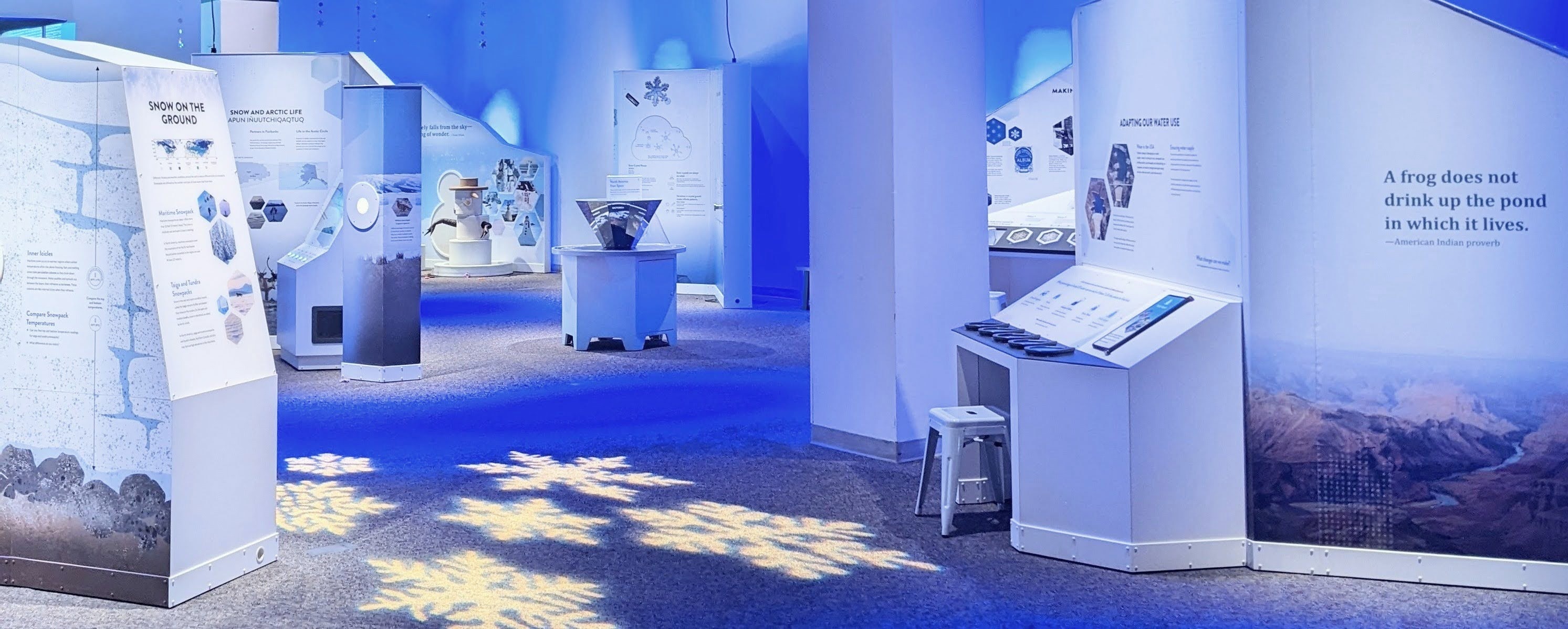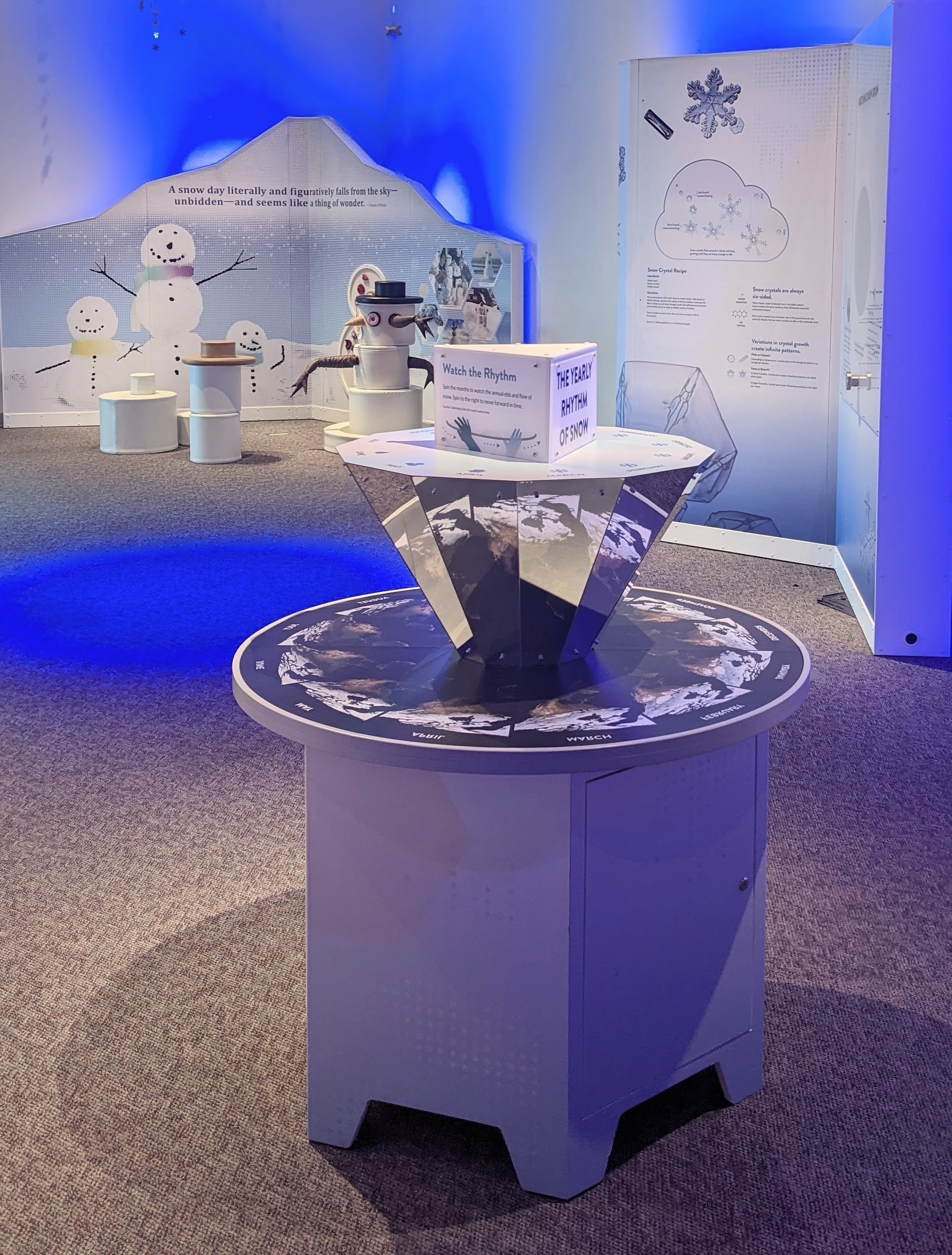Traveling museum exhibit shows importance of snow
Rod Boyce
907-474-7185
Jan. 27, 2022
Snow is a key to life on Earth. It reflects up to 80% of sunlight, functioning as an essential cooling radiator for the planet. It becomes liquid water in spring to benefit crops and fill reservoirs that generate electricity.
But snow is changing: It arrives later and melts sooner, affecting life and the environment.
To highlight the importance of snow, the University of Alaska Fairbanks Geophysical Institute, the Oregon Museum of Science and Industry in Portland and collaborators have created “Snow: Tiny Crystals, Global Impact,” an interactive museum exhibit about snow and the vital role it plays in our global climate system. The traveling exhibit, which opens Feb. 1 in Oregon, is funded by the National Science Foundation.

In the "Snow" exhibition, visitors learn about different types of snow and snowpack, the study of snowflakes, the importance of snow in Arctic cultures, our reliance on snow for usable water, and snow's role in cooling our planet.
An opening ceremony will be held 3:30-5 p.m. Feb. 1, with a program beginning at 3:50 p.m. Museum President and CEO Erin Graham and Matthew Sturm, group leader for the Snow, Ice and Permafrost Group at the UAF Geophysical Institute, will be among those speaking.
Sturm will also speak at the museum’s Science Pub at 7 p.m. Feb. 1 in the museum’s Empirical Theater. Tickets can be purchased online. A Zoom option is available as well for those who RSVP.
"Humans have a love-hate relationship with snow,” Sturm said. “We ski and snowmobile on it, but we curse it when it covers our roads, knocks out our power and cancels our airline flights. But without snow, life as we know it would not be possible on planet Earth.
“With global snow cover changing now, we developed this exhibit to make people aware of our connection to snow in a more fundamental way, because we will be adapting to those changes whether we want to or not,” he said.

Visitors can spin this praxinoscope to see how snow cover expands and contracts seasonally.
The exhibit is a collaboration among the UAF Geophysical Institute, the Oregon Museum of Science and Industry, the Center of Science and Industry in Columbus, Ohio, and the Goldstream Group of Fairbanks. It is the second exhibit developed through this collaboration. The previous was a permafrost exhibit, also funded by the National Science Foundation.
“We are very pleased to collaborate again with the Geophysical Institute, especially for Matthew Sturm’s enthusiastic and expert leadership in telling the story of snow and climate,” said Victoria Coats, the snow exhibit leader for the Oregon Museum of Science and Industry. “This exhibit is a significant project at OMSI for advancing our museum-wide strategic initiative to catalyze climate and environmental action.
“Exhibitions are an essential part of climate communication in museums, and snow is a particularly familiar and appealing entry point for visitors,” she said. “We hope the exhibit will inspire climate action at every museum it visits during its national tour.”
“Snow: Tiny Crystals, Global Impact” will be at the Oregon Museum of Science and Industry through April 10, then will travel to regional museums throughout the country. The exhibit has not yet been scheduled to visit Alaska.
ADDITIONAL CONTACTS: Matthew Sturm, University of Alaska Fairbanks Geophysical Institute, 907-474-5257, msturm1@alaska.edu; Victoria Coats, Oregon Museum of Science and Industry, 503-504-1315, vcoats@omsi.edu.
NOTE TO EDITORS: Snow scientists and agency personnel from Alaska and the Pacific Northwest will be available at the opening ceremony to discuss the importance of snow, recent local trends in snow and climate, and the impact of those changes.
Photos are available here.


